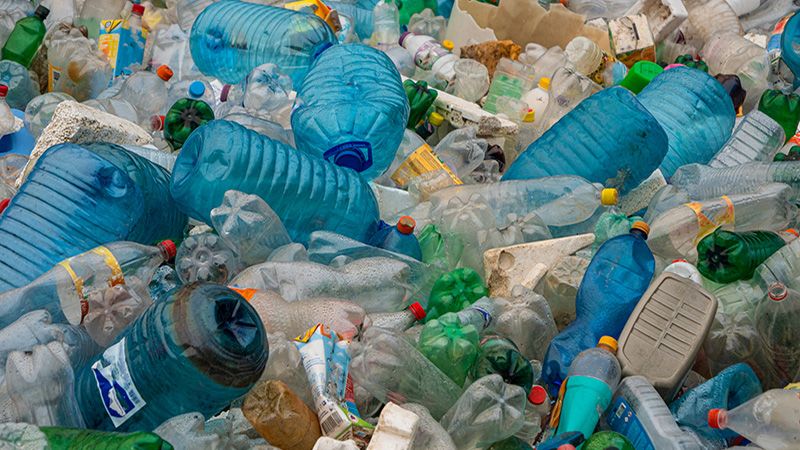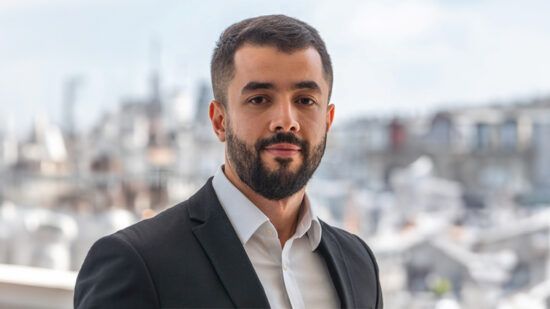Earlier this year, The Circulate Initiative called for greater investment to tackle plastic pollution after new data revealed only $32bn (£24.6bn) a year of private investment went to plastics circularity between 2018 and 2023 – far below the $1trn (£770bn) needed.
Meanwhile, earlier this month, international negotiations on a legally binding treaty addressing plastic pollution failed to reach an agreement. This means the world will need to wait another year for the next chance to take collective action against this escalating global crisis.
However, it was noted the proposals were not ambitious enough, sparking hope that a stronger and more impactful version of the treaty could emerge within the next 12 months.
In a webinar hosted by Greenbank – Tackling plastic pollution: What will the UN global plastics treaty mean for companies and investors? – Lauren O’Leary, ethical, sustainable and impact researcher at Greenbank, emphasised the importance of adopting a legally binding agreement to end plastic pollution. O’Leary said the absence of a binding treaty has meant “the majority of company’s current plastic reporting is not of the same rigour as climate reporting. This results in a lacking level of detail and standardisation across company reporting, and makes it hard to measure impact”.
To overcome this inconsistency, O’Leary suggested “the introduction of a standardised plastic disclosure is required to bring both credibility and consistency to company reporting standards.” Hence, a legally binding treaty addressing plastic pollution appears necessary to push mandatory plastic reporting across companies.
So what can the investment industry do to play its part to close the plastic pollution investment gap?
The plastic circular economy
Firstly, we need to understand exactly what we are facing. Umesh Madhavan, research director at The Circulate Initiative, a non-profit organisation that works to solve the plastic pollution challenge in emerging markets, said a circular economy is “based on the principle of designing waste out of the system, shifting from our current linear ‘make, take, waste’ system to one that aims to keep plastic in circulation for as long as possible.”
“In a linear economy, most materials are lost to landfill or incineration. The system is geared towards disposal, rather than recovery. Additionally, new products are almost entirely dependent on the use of virgin materials.
“A circular system aims to generate the most value possible out of the plastic we use by recovering it for reuse or recycling, ultimately reducing our dependence on fossil-fuel based virgin plastics.”
To understand more around global investment data in plastic circularity in particular, The Circulate Initiative recently launched the Plastics Circularity Investment Tracker in collaboration with the International Finance Corporation (IFC), with the aim of boosting transparency about the financing of plastic circularity solutions.
Madhavan said: “Investors need access to information to make investment decisions, such as a visible pipeline of investable solutions and investment track records to fund a circular economy for plastics.”
Overall, the tool ensures that funding barriers to circularity are addressed and tackled by providing an overview of the global private investment landscape into plastics circularity since 2018. It details investment data by geography, archetypes and investment categories on deals that took place between 1 January 2018 to 31 December 2023. For example, it can be used to identify the private equity investments in recycling in India, Indonesia and Thailand in 2019, 2020 and 2021.
“By facilitating a better understanding of the investment landscape, we aim to enable strategic decision-making and act as a catalyst for mobilising capital to address the financing gap,” Madhavan concluded.
The investor take
PA Future also spoke to funds managers – Alexandra Christiansen, portfolio manager of the Nordea 1 – Global Climate Engagement fund and Tom Morris-Brown, portfolio specialist at Impax Environmental Markets – to find out where the challenges and opportunities are in the plastic circularity market from an investment perspective.
Opportunities
“Investing in plastic recycling solutions emerges as a long-term economic opportunity,” Alexandra said as “plastic packaging is problematic as it is made primarily from fossil fuel-based chemicals, which are associated with high carbon and ecological footprints, and is designed to be disposed of right after use”.
“Solutions exist across the plastic value chain from raw material producers looking for alternatives to conventional oil-based plastic, to consumer goods companies using recycled content at scale, and including waste management companies upgrading materials recovery facilities and investing in waste collection infrastructure to increase access to recycling.”
Thomas also emphasised “the scale of plastic pollution is impossible to ignore” and outlined three key areas of opportunity when it comes to investing in plastic pollution solutions.
The first is recycling due to the “high demand for high-quality recycled plastic feedstock.” For example, the US-listed company Waste Connections provides collection, cleaning and sorting services, where plastics are compressed and prepared for sale to be repurposed and reused.
The second is the investment opportunities in sustainable plastics. He gave the example of Corbion, which through its joint venture with TotalEnergies, and develops “sustainable plastics, with a focus on Poly Lactic Acid (PLA), a biobased and biodegradable polymer made from renewable resources like sugarcane.” He explained that PLA has a smaller carbon footprint than traditional plastics, and is also biodegradable, therefore contributing to the circular economy.
The final opportunity is plastic alternatives, where many companies create alternative packaging, such as compatible paper and plastic mulching film that is used in agriculture.
Challenges
However, the pair highlighted a number of hurdles to overcome with Alexandra pointing to high costs and insufficient infrastructure as the biggest challenge, while Morris-Brown suggested capital intensity is hardest to manage in the investment process.
Alexandra said “while private capital needs to be redirected to support upstream solutions, including reuse and refill systems for packaging and products, the cost to recycle plastics is still higher than the cost of producing virgin plastics.”
She added: “Moreover, insufficient infrastructure development for recycling and recovery limits the possibility to create circularity in plastic manufacturing. This is because most consumer goods companies also grapple with investments, execution and transparency around recycling programs.”
Thomas explained that because “companies operating in this space tend to be industrial or materials businesses, they come with high levels of capex and often long payback periods. These substantial upfront investments can be prone to market/economic risk, as well as project delays or operational issues.
“Prior to investment therefore, it is key to determine whether market demand for a company’s products and solutions can justify the outlay, as well as whether management have a robust operational track record,” he explained.
Case study: Colgate
Alexandra discussed Nordea’s investment in Colgate as an engagement example with the the firm to taking a lead role in dialogue with the well-known toothpaste brand.
She said: “In 2019, an audit from the non-profit, Break Free From Plastic, identified Colgate as the eighth-biggest plastic polluter worldwide. While the company has been an early adopter of the New Plastics Economy Global Commitment, led by the Ellen MacArthur Foundation, we were concerned it does not move from aspiration to realisation fast enough.
“In 2023, we signed an investor statement coordinated by the Dutch Association of Investors for Sustainable Development (VBDO), urging consumer goods and grocery companies to do more to cut use of plastic packaging amid rising costs and risks. We sent out a letter calling on the company to significantly step up efforts to use less unnecessary plastic and increase recyclability.
“Following this, Colgate confirmed to Nordea they were committed to achieving 100% reusable, recyclable or compostable plastic packaging. Further, the firm urged the company to “publish a circular packaging strategy laying out actions taken to expand the use of recycled and recyclable materials.”
Following ongoing engagement, immense progress has been made. Alexandra continued: “Our dialogue allows for transparency on the effective recycling rate of HDPE plastic toothpaste tubes, and visibility on investments required to reach recyclability at scale.
“We are encouraged that more than 90% of Colgate’s toothpaste tubes in the US have already been switched to the recyclable design but remain vigilant the global transition will be completed by 2025.
Overall, she maintained “that adopting a circular mindset in product design and lifecycle management is key to minimise risk exposure to taxation, reputational costs, and litigation.”
Future industry ambitions
In terms of where both investors hope the plastics sector to be in the next five years, they remain hopeful with the help of investors, policymakers, entrepreneurs and the public, plastic pollution rates will reduce.
Alexandra said: “The health of the planet depends upon imaginative thinking in order to halt the vast tide of plastic waste. More companies are harnessing their power to address the problem through reduction, recycling and reimagining plastic usage.
For example, “Entrepreneurs often lead the way in combatting the planet’s challenges, and investors can support them in developing new technology and rethinking business models that positively contribute to both profit margins and social impact.”
Thomas echoed this optimism, claiming major CPG companies are substituting plastics into paper packaging, where it is “estimated that up to 25% of plastic packaging can be substituted for fibre-based with little to no impact to the functionality of the product.”
Further, transitioning away from plastic packaging does not impede market growth, according to Thomas. Rather, he expected longer-term, sustainable packaging will have a “more profound impact on the growth of the packaging industry, adding approximately 0.5-1.0% to growth each year on average.”
Through engagement and transparency around plastic circularity data, there is hope investors can drive positive environmental and social change by reducing plastic waste and funding the discovery of innovative packaging solutions. But a legally binding treaty on plastic pollution will likely be a boost that is needed to get all companies to take action.








